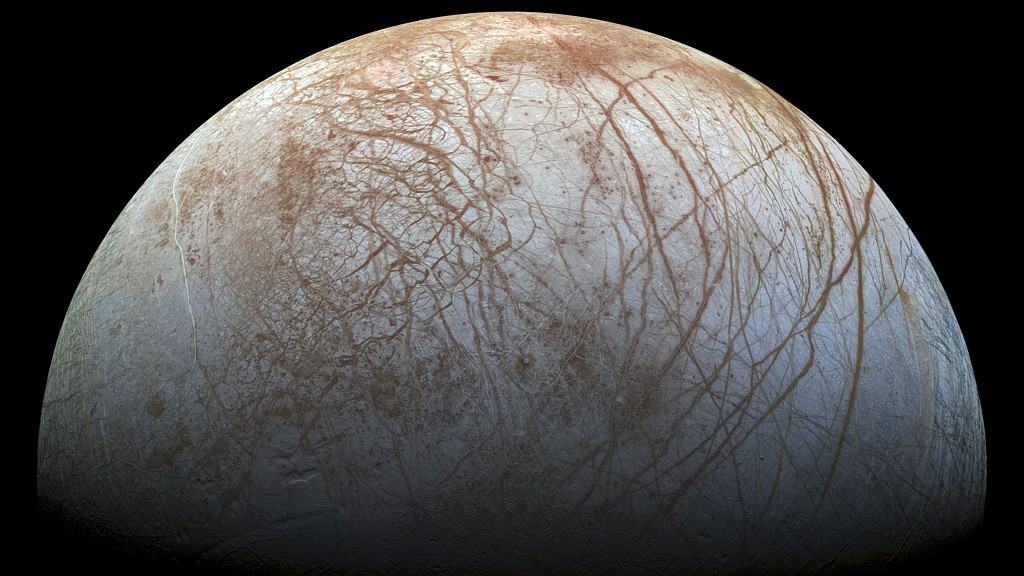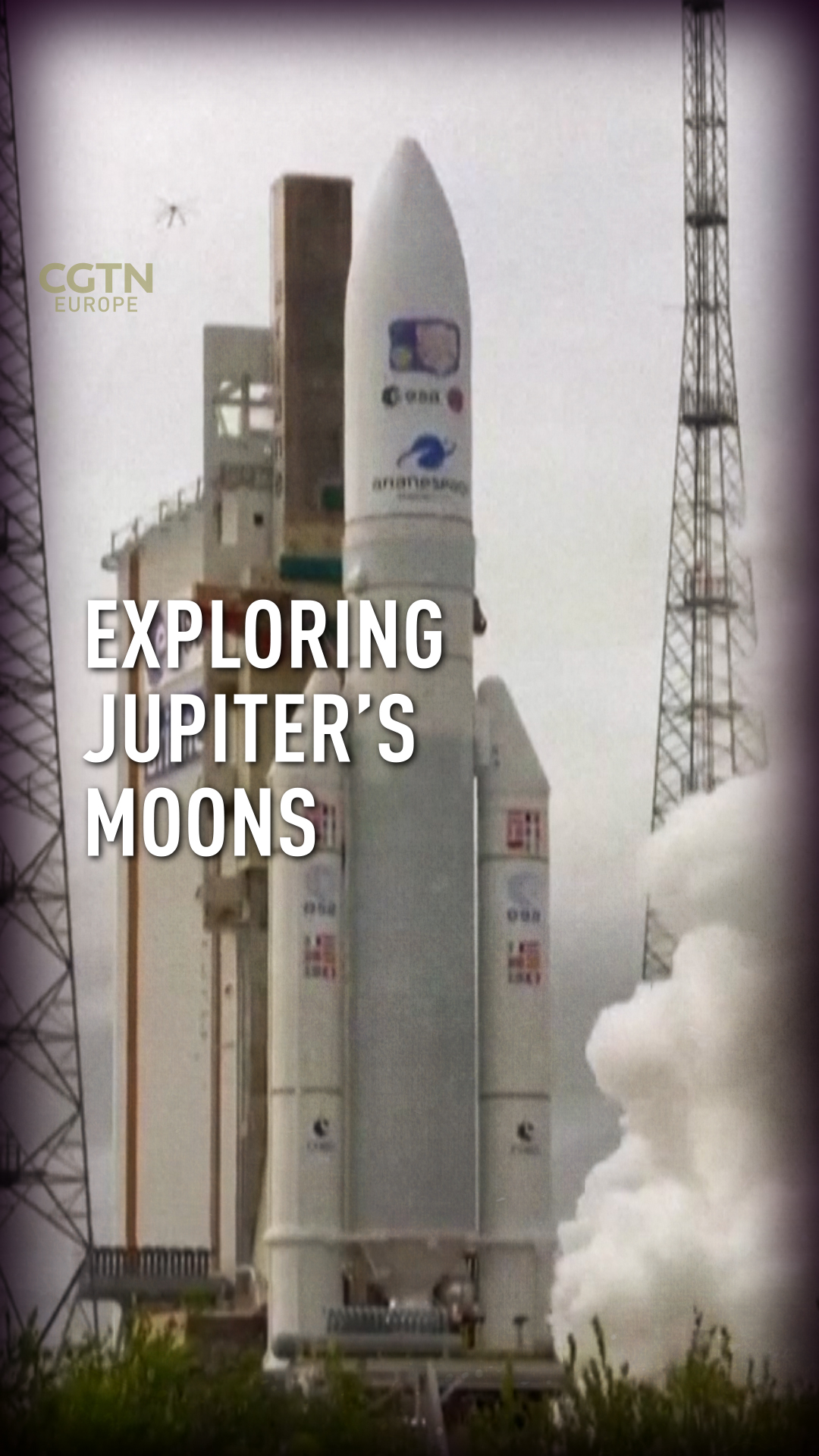
Jupiter's icy moons are believed to be the most likely place in the solar system to sustain life./NASA via CFP
Jupiter's icy moons are believed to be the most likely place in the solar system to sustain life./NASA via CFP
The European Space Agency 's(ESA) Jupiter Icy Moons Explorer has taken its first monitoring camera images showing part of the spacecraft with Earth as a stunning backdrop. The mission launched on an Ariane 5 rocket from Europe's Spaceport in Kourou on April 14 and the images were captured in the hours afterwards.
It is one of the the ESA's most ambitious missions.
The Jupiter Icy Moon Explorer, or Juice, has embarked on an eight-year assignment to explore the ice-covered moons of Jupiter - the solar system's largest planet.
The spacecraft was launched into the atmosphere aboard an Ariane 5 rocket from Europe's Spaceport in French Guiana on Friday. It had originally been scheduled for liftoff on Thursday, but was aborted at the last minute due to adverse weather conditions.
READ MORE
'Best chance' of finding alien life on Jupiter and Saturn, says ESA
Türkiye prepares for momentous elections
Climate changes forces Loggerhead turtles to migrate
Following launch and separation from the rocket, ESA's European Space Operations Centre (ESOC) in Darmstadt, Germany, confirmed acquisition of a signal via the New Norcia ground station in Australia at 15:04 CEST.
00:59

Pushing the boundaries
The spacecraft's 27-meter long solar arrays unfurled at 15:33 CEST, ensuring Juice can travel to the outer Solar System using solar energy from the sun.
"ESA, with its international partners, is on its way to Jupiter," said ESA Director General Josef Aschbacher.
"Juice's spectacular launch carries with it the vision and ambition of those who conceived the mission decades ago, the skill and passion of everyone who has built this incredible machine, the drive of our flight operations team, and the curiosity of the global science community. Together, we will keep pushing the boundaries of science and exploration in order to answer humankind’s biggest questions," he said.
Once Juice makes it to Jupiter's orbit, it will conduct close flybys of the moons Ganymede, Calisto and Europe. All three are thought to possess subsurface water under a thick crust of ice.
The presence of water is considered a fundamental requirement for finding life outside of Earth. Some estimates suggest Ganymede alone could hold six times the amount of water there is on earth.
"The scientific treasure that will be returned will undoubtedly have far reaching implications on how we understand our Solar System and if there are potentially habitable locations beyond Earth – not just in our own cosmic neighborhood but also well beyond in the vast number of exoplanet systems populating our Universe," says Olivier Witasse, ESA's Juice project scientist.
A slingshot into space
Over the next two-and-half weeks, Juice will deploy its various antennas and instrument booms that will study the subsurface of Jupiter's icy moons.
An eight-year cruise with four gravity-assist flybys of Earth and Venus will help slingshot the spacecraft towards the outer Solar System.
"Hundreds of millions of kilometers from Earth and powered by just a sliver of sunlight, we will guide Juice through 35 flybys of Jupiter's ocean moons in order to gather the data needed to bring scientists closer than ever to these compelling destinations," says Ignacio Tanco, ESA's Juice spacecraft operations manager.
Bidding farewell to Ariene 5
Juice is the last ESA space science mission to launch on an Ariane 5, in a long legacy dating back to 1999.
"What a magnificent demonstration of Europe's capacity to dream big and deliver results to match," says Daniel Neuenschwander, ESA's Director of Space Transportation. "We can all be proud of Ariane 5 for making possible missions like Juice and setting such a high standard for our new generation of launch systems."
Future science missions for ESA will be carried by Ariene 5's replacement, Ariene 6.
Subscribe to Storyboard: A weekly newsletter bringing you the best of CGTN every Friday
Video editing: James Sandifer